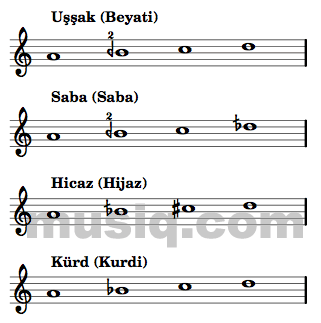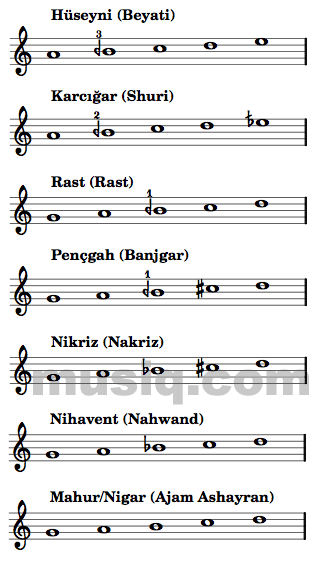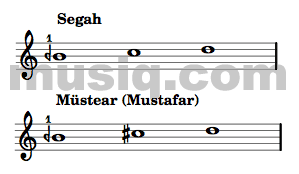|
|
|
| |
| |
Trichords, tetrachords, pentachords, and makam families
The basic melodic unit of Turkish and Arab music is a 3, 4, or 5-note group (trichord, tetrachord, or pentachord) of adjacent notes with specific intervallic qualities.
A small number of n-chords are specifically named. The names relate to the names of specific makams which prominently feature these units, as well.
Tetrachords

Pentachords

* Notes: Pençgah is a very rare pentachord, only found in one makam (which itself has very little repertoire), and as a passing modulation in a few pieces.
Trichords

* Notes: Müstear is a very rare trichord; it's typically only used in passing for brief passages in other makams.
With all these units, at these pitches and also transposed to other notes, you can construct hundreds of known makams,
or even create your own new ones (as Ottoman sultans such as Selim III were sometimes known to do).
Makam ailesi (families)
One way of grouping makams is to look at the base unit - thus all makams whose basic unit is Ussak are in the Ussak ailesi.
All makams featuring the Segah trichord are thus in the Segah ailesi. In Egyptian theory, this is known as the fasilah system, and is the primary grouping system.
However, in Turkey, some scholars group makams based on the starting pitch alone, others by other criteria. For the beginning student,
conceiving of this type of grouping is perhaps the easiest way to start to get into the differences between makams.
| |
| |
|

